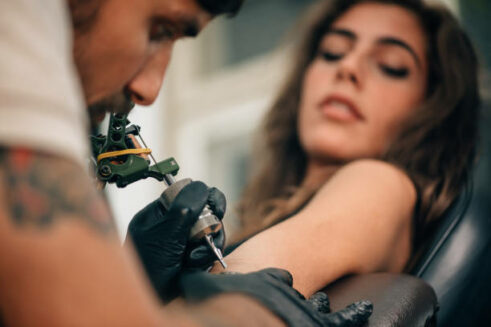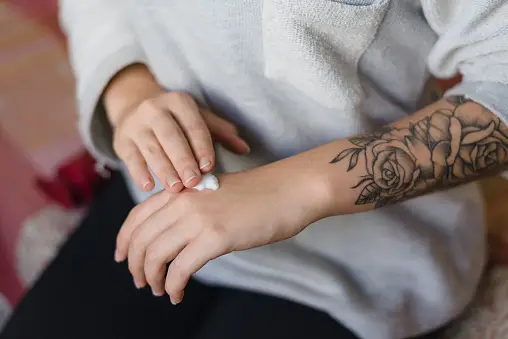タトゥーは近年、非常に人気を博しています, ますます多くの個人が自己表現の形としてインクを塗られることを選択しています. しかし, このプロセスは、しばしば不快で痛みを伴う可能性があります, タトゥーセッション中に麻痺クリームの需要の増加につながる. これらのクリームは不快感を大いに軽減することができます, 使用されている成分を理解し、アレルギー反応の可能性を考慮することが重要です.
このブログで, タトゥーの麻痺成分を理解することの重要性と、アレルギーを引き起こす可能性を探ります, 情報に基づいた決定を下し、安全性を優先することを可能にします.
タトゥーの麻痺クリームを理解する
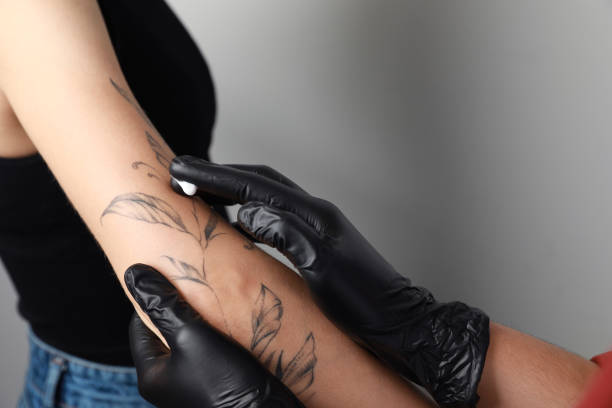
タトゥー麻痺クリーム, タトゥーの不快感を和らげることでますます人気があります, タトゥープロセス中に鈍い痛みに合わせて調整されます, より快適な体験を確保します.
これらのクリームのさまざまな種類が存在します, リドカインは一般的な成分です, 肌を麻痺させる一時的な局所麻酔薬として行動する. また、プリロカインまたはベンゾカインを特徴とするものもあります, 脳に痛みを伝える神経信号をブロックすることにより、同様の麻痺効果を提供する.
申請プロセスで, これらのクリームは通常、タトゥーが始まる前に使用されます. タトゥーエリアの準備が重要です, 清潔さを確保します. クリームはたっぷりと塗布されています, 約で残っています 30 分, 麻痺剤が有効になるようにします.
一般的なアプリケーション領域には、胸郭のような敏感または痛みを伴う領域が含まれます, 内側の腕, または骨の領域, ただし、詳細は個々の疼痛耐性によって異なる場合があります.
タトゥーの麻痺クリームが不快感を和らげますが, 彼らは完全に痛みを排除しません. 痛みの緩和レベルは個人によって異なります, 疼痛耐性や採用されたタトゥーテクニックなどの要因の影響.
タトゥーの麻痺クリームはどのように機能しますか?
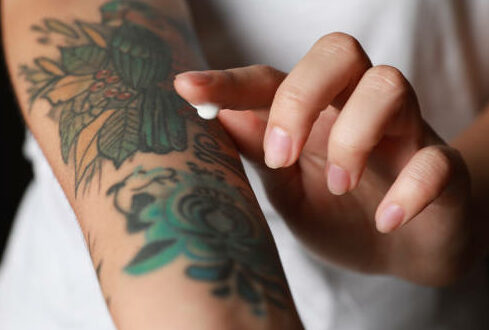
タトゥー麻痺クリーム, 入れ墨中に痛みの緩和を求めている人に人気のある選択肢, 神経シグナルをブロックし、より快適な体験のために痛みの感覚を減らすことにより機能する.
有効成分, リドカインやベンゾカインのように, 局所麻酔薬に該当します, 脳から脳への疼痛シグナル伝達を阻害します. 皮膚に適用されます, これらのクリームは外層に吸収されます (表皮) 真皮を深く掘り下げます, タトゥーが発生する場所. 吸収が必要です 20 に 60 分, クリームタイプと個々の肌で変化します.
一時的な救済にもかかわらず, 潜在的な副作用に注意してください: 皮膚の刺激 (赤み, かゆみ, 腫れ), アレルギー反応, 特に同様の物質にアレルギーがある場合. 不適切な使用は、全身吸収につながる可能性があります, めまいを引き起こします, ライトヘッド, または他の場所のしびれ. クリームの指示に従ってください, 予期せぬ症状については専門家に相談してください.
一部のタトゥーアーティストは、クリームを麻痺させることに対して警告しています, タトゥープロセスへの影響を引用します. これらのクリームは肌を固めることができます, アーティストの作品を複雑にします. 血管収縮剤を含むクリームは、タトゥーの領域への血流を減らすことにより、治癒に影響を与える可能性があります.
結論は, タトゥー麻痺クリームは、神経シグナルをブロックすることでタトゥー中に痛みを和らげます. 利益にもかかわらず, 潜在的な副作用とリスクを理解することが重要です.
タトゥー麻痺クリームに対するアレルギー反応
タトゥー麻痺クリーム, タトゥーの不快感を最小限に抑えるために人気があります, 潜在的なリスクを伴う, 具体的にはアレルギー反応. 刺激と真のアレルギー反応を区別することが重要です.
刺激, 麻痺クリームの物質への一時的な反応, 発赤をもたらします, かゆみ, または軽度の不快感, クリームの除去直後に解決します. 対照的に, 本物のアレルギー反応, 特定の成分によってトリガーされます, より強力で持続的な反応を開始する免疫システムを含む, クリームを取り除いた後でも.
アレルギー反応症状を認識することが重要です. 重度のかゆみ, 腫れ, 水ぶくれ, 巣箱, または発疹が発生する場合があります, 呼吸やめまいが困難になることを示す深刻な症例があります, すぐに医師の診察が必要です.
一般的に安全ですが, タトゥー麻痺クリームはアレルギー反応のリスクが低い, 特にリドカインやベンゾカインなどの成分に敏感な個人では. 使用前にパッチテストを実施することは、潜在的なアレルギーを特定するのに役立ちます, 安全なタトゥー体験を保証する.
アレルギー性成分の識別
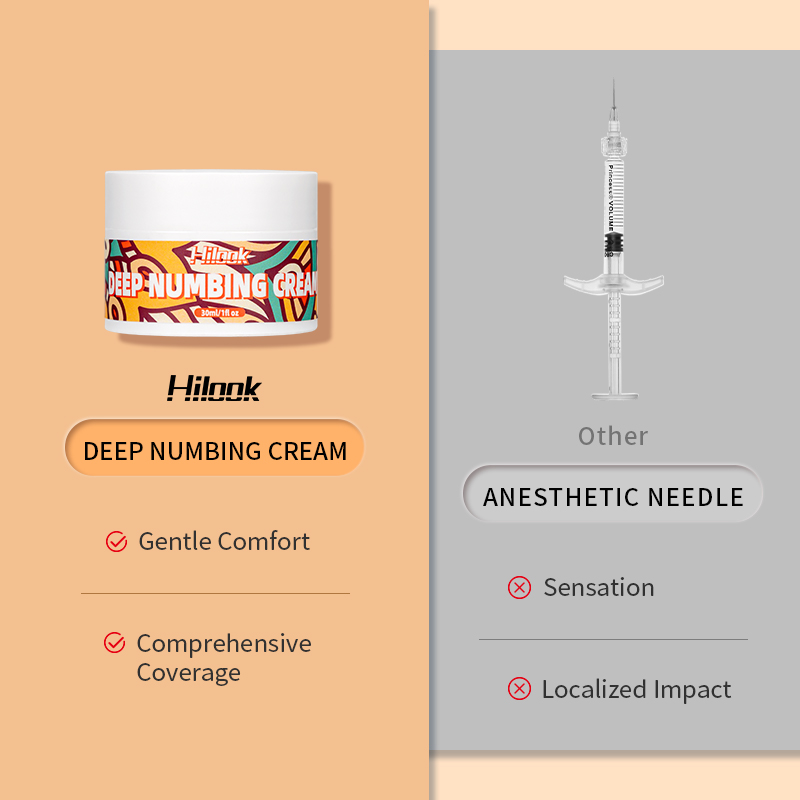
アレルギー性成分の識別
アレルギーは、タトゥーの麻痺クリームに懸念をもたらします, 適用前に潜在的なトリガーの認識を必要とする. 一般的なアレルギー性成分の概要を説明します, 感受性を高める要因について議論します, これらの要素を特定するためのヒントを提供します.
一般的なアレルギー性成分
- リドカイン: 効果的ですが、発疹のようなアレルギー反応を引き起こす可能性があります, かゆみ, または一部の個人の腫れ.
- ベンゾカイン: リドカインに似ています, アレルギー性の皮膚反応につながる可能性があります, 赤みなど, 巣箱, または水ぶくれ.
- テトラカイン: この局所麻酔薬はアレルギー反応を引き起こす可能性があります, 皮膚の刺激または呼吸困難をもたらします.
- プリロカイン: めったに, 敏感な個人のアレルギー接触皮膚炎を引き起こす可能性があります.
アレルギーを起こしやすい個人
アレルギーは誰にでも影響を与える可能性があります, 増加した感受性はリンクされています:
- アレルギーの個人的または家族の歴史
- 同様の製品または成分に対する以前のアレルギー反応
- 喘息, 湿疹, または他のアトピー条件
- 免疫システムの弱体化
ラベルの読み物と職人のタトゥー製品のためのヒント
安全性を確保し、これらのラベルの読み物のヒントでアレルギーのリスクを最小限に抑える:
- クリア成分リスト: メーカーは包括的な成分リストを提供する必要があります.
- 一般的なアレルゲンに精通してください: アレルギー性成分の事前知識は、ラベルの識別を支援します.
- 個人のアレルゲンとクロスチェック: 麻痺したクリームにアレルギーを引き起こす成分が存在しないことを確認する.
- 不確かな場合は医学的なアドバイスを求めてください: 成分やその潜在的なアレルギー効果について不確実な場合は、安全な選択について医療専門家に相談してください.
さらに, 職人のタトゥー製品の台頭, より多くのタトゥーアーティストは、独自のタトゥーナニスクリームをカスタマイズすることです プライベートラベルのタトゥーアフターケア. これにより、より明確でよりパーソナライズされたラベルが可能になります, 顧客が明示的な指示と警告を受け取るようにします.
タトゥー麻痺クリームアレルギー: 治療と管理
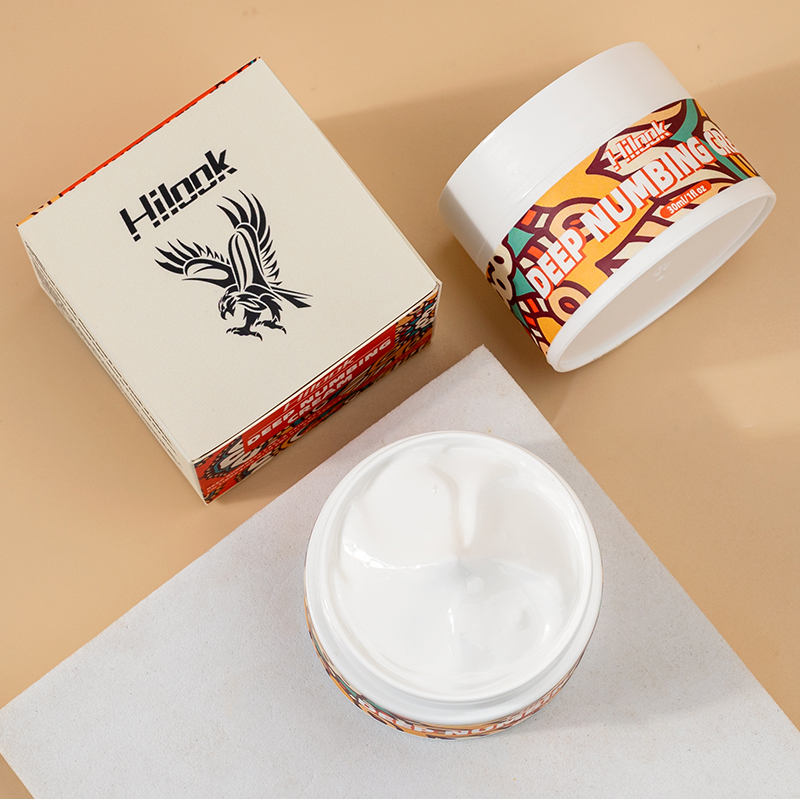
タトゥーの前に麻痺クリームを使用することは、痛みを軽減するために一般的です, しかし、アレルギー反応が発生する可能性があります. ここ, 治療を探求します, 専門的なアドバイスの重要性, 将来の反応を管理および防止するためのヒント.
アレルギー反応が発生した場合, 正確な診断については、医療専門家に相談してください. 市販の抗ヒスタミン薬またはコルチコステロイドクリームは、症状を緩和するために提案される場合があります. 重度の症例は、反応を抑制するために処方の強さの選択肢または経口薬が必要になる場合があります.
専門的なアドバイスは非常に重要です, 自己診断を避けます. ヘルスケアプロバイダーはアレルゲンを識別します, 適切な治療法を提供します, 監視回復を監視します, 特に深刻な症状のある重度の場合.
アレルギー反応を管理するには、刺激を避けることが含まれます, エリアを清潔に保ちます, 低刺激性製品で保湿します. クールなコンプレスを適用すると、安心できます. 予防には、麻痺クリームを使用する前にパッチテストの実行が含まれます, 成分リストを読む, アレルギーがある場合は、医療専門家に相談してください.
タトゥーインクとの交差反応性
あまり痛みを伴わないタトゥーのために麻痺クリームを選ぶことは一般的です, しかし、アレルギー反応が可能です. 治療オプションを探索します, 専門的なアドバイスの重要性, 将来の反応を管理および防止するためのヒント.
タトゥー麻痺クリームに対するアレルギー反応が発生した場合, 正確な診断のために迅速な医療相談を求めてください. 軽度の症状には、市販の抗ヒスタミン薬または局所コルチコステロイドが推奨される場合があります, 重度の症例は、反応を抑制するために処方強度のコルチコステロイドまたは経口薬を必要とする場合があります.
専門的なアドバイスは非常に重要です. 自宅での自己診断と治療は魅力的に思えるかもしれません, しかし、医療提供者は正確な診断を保証します, アレルゲンを識別します, 適切な治療法を処方します. 重度の反応, 呼吸困難や顔の腫れのように, すぐに医師の診察を必要とします.
管理と予防が重要です. 患部を傷つけないでください, 肌を清潔に保ち、低刺激性製品で保湿します, 潜在的な刺激物を避けます. 涼しいコンプレスを塗るか、ぬるま湯をすることも救済を提供することができます.
予防のため, 麻痺クリームを使用する前に、常にパッチテストを実行します. 目立たない領域に少量を適用します, 待って 24 反応の時間, 既知のアレルゲンの成分リストを慎重に確認してください. アレルギーが懸念される場合, 麻痺クリームを使用する前に、医療専門家に相談してください.
タトゥー麻痺クリームに対するアレルギー反応の防止

タトゥー麻痺クリームを使用すると、タトゥーの不快感を和らげることができます, しかし、敏感肌やアレルギーの歴史を持つ人にとっては、予防策が重要です. 安全なタトゥーエクスペリエンスのために、これらのヒントに従ってください:
- パッチテスト: 最初の使用前, パッチテストを実施します. 内側の前腕に少量を塗ります, 待って 24 時間, 副作用がない場合は続行します. 不快感が発生した場合, クリームを避け、代替案を検討してください.
- 専門家に相談してください: 皮膚科医または経験豊富なタトゥーアーティストからアドバイスを求めてください. 彼らはあなたの肌に適したクリームを推奨することができます, 潜在的なアレルゲンを特定します, 低アレルギーオプションを提案します, アレルギーのリスクを最小限に抑えます.
- 代替の痛みの管理: 痛みを緩和するための代替方法を探索します. 氷療法, プロセスの前後にタトゥーエリアに氷を塗る, 皮膚を麻痺させることができます. 特定のアレルゲンを避けるために、さまざまな成分を持つ局所麻酔薬を検討してください.
これらの測定を優先することで、タトゥー麻痺クリームに対するアレルギー反応の可能性が減少します. パッチテスト, professional guidance, and alternative strategies ensure a safer and more enjoyable tattoo experience, especially for allergy-prone individuals. Always prioritize your health and well-being in body art decisions.
結論
This post discussed common tattoo numbing cream ingredients, stressing their allergy potential. Understanding these ingredients is crucial for a safe tattoo experience. We highlighted risks with Lidocaine and Benzocaine, urging patch tests and professional advice. Safety is key; consult a tattoo artist or dermatologist for guidance. Share experiences in the comments for a safety-focused community. Ensure a safe tattoo process through research and consideration.


